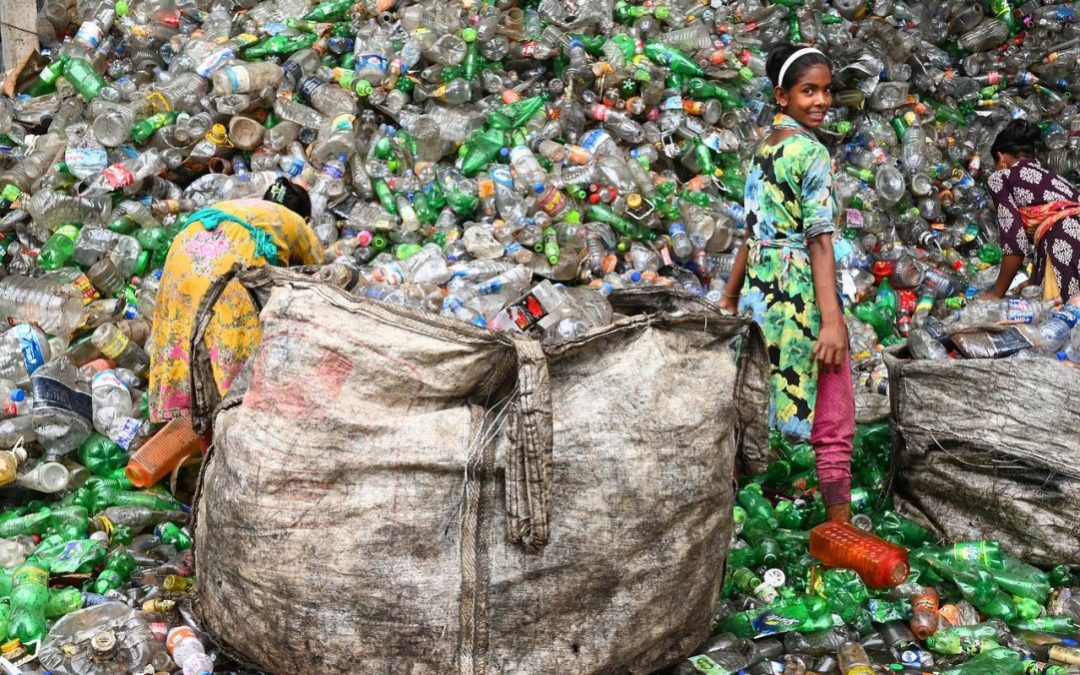Introduction
Child labour refers to work engaged in by children which is mentally, physically, socially or morally dangerous and harmful to the children and also interferes with their schooling.[1] Article 32 of the Convention on the Rights of the Child (CRC) recognizes the rights of children to be free from economic exploitation and works that are harzardous or interfere with their general wellbeing and development. ILO 138 prescribes the minimum age for work and ILO 182 addresses the worst forms of child labour. Recommendation 146 accompanies ILO 138 and directs state signatories to develop national policies with provisions on poverty alleviation, promotion of decent jobs for adults, free education among other factors which have a direct effect on child labour.[2] Equally relevant is the United Nations 2030 Agenda for Sustainable Development which is hinged on 17 Sustainable Developments Goals (SDG). SDG 8 is for the promotion of sustained, inclusive and economic growth, full and productive employment and decent work for all. SDG (Target) 8.7 is to take immediate and effective measures to eradicate forced labour, end modern slavery and human trafficking and secure the prohibition and elimination of the worst forms of child labour, including recruitment and use of child soldiers, and by 2025 end child labour in all its forms.
SDG 8.7 in Nigeria
Nigeria is signatory to the key UN Conventions aimed at child protection and currently has a National Action Plan on the elimination of child labour for the years 2021-2025. This action plan is intended to coincide with SDG 8.7 on eliminating all forms of child labour by the year 2025. With more than half of the current year gone by, the race to accomplish target 8.7 has barely two years and four months to go. International child right actors are concerned at the slow pace of attaining to SDG 8.7 of eliminating all forms of child labour by the year 2025 globally.[3] The Durban Call to Action[4] which followed the Fifth Global Conference on the Elimination of Child Labour held between the 15th to the 20th of May 2022 in Durban reiterated the challenge to address the elimination of all forms of child labour. Based on current statistics, the COVID pandemic caused setbacks in global efforts to eliminate child labour, shrunk previous gains and ballooned the number of children trapped in child labour.[5] UNICEF data suggests that 26% of children aged 5 to 11 in West and Central Africa are subjected to child labour.[6] The Situation Analysis of Children in Nigeria 2022 report that about 14 million children between the ages of 5 -14 are currently engaged in child labour.[7] Beyond policy and print, it is not immediately obvious how Nigeria intends to close up the gap by 2025. While Nigeria anticipates a change of government in the coming year and possibly, an improvement in its economic conditions, it is not likely that the country will be sufficiently close to SDG 8.7 by 2025.
UNICEF’s multisectoral approach to child labour identifies that an effective coordination across systems is key to ensuring protection and access to services.[8] Systems include nutrition and food, private sector, services for CAAC (children and armed conflict), social protection, empowered families, and education and skills. The coordination of these systems which do not stand alone but are intricately interwoven rests on several stakeholders but squarely on the government.
One basic system in the multisectoral approach is nutrition and food. This ties into the need for food security. The challenge of food insecurity in Nigeria is not peculiar to children but affects them greatly because of their vulnerability. The causes of food insecurity in Nigeria are easily traceable to insufficient production, inefficient policies, civil insecurity, corruption and low technology for processing and storage.[9] A few of these causes are not peculiar to Nigeria such as the effects of climate change on food production which has affected some northern states with significant desert encroachment, dwindling farmlands and water scarcity.[10] The country however needs to surmount the challenge of food insecurity if there would be any gains in eliminating child labour.
Another important system is the private sector. The Government’s efforts to achieve SDG 8.7 depends greatly on stakeholder involvement. The Unicef Guidance Note for Action on Child Labour and Responsible Business Conduct charges the business community to contribute its quota to eliminating child labour by guaranteeing decent work and living wages to employees.[11] The Nigerian business community on its part is faced with a business environment where the cost of doing business is relatively high. According to the World Bank ranking on the ease of doing business for 2020, Nigeria ranked 131 out of 190 countries considered.[12] The indices used pertain to registering businesses, obtaining permits, electricity supply, getting credit, protecting minority investors, enforcing contracts, registering property, paying taxes, resolving insolvency and trading across borders. The ranking is based on select cities and thus may not reflect the actual position of other parts of the country. There are several other challenges including security concerns, high cost of generating power and needed infrastructure, multiple layers of regulatory fees and more recently, compulsory sit-at-home exercises in some parts of the country on certain days of every week which culminate in a difficult business environment for the business community. In the face of these challenges, there is little justification for the government to charge the Nigerian business community to pitch in by guaranteeing sufficient wages for employees in the fight against child labour.
Services for CAAC is fast becoming one of the most critical systems in the elimination of child labour in Nigeria. This owes to the fact that the effect of children in armed conflict cascades into every other system and threatens to wipe out the gains the country has made in its effort to eliminate child labour. Amnesty International has reported that no fewer than 1,500 children have been abducted from schools in the last eight years.[13] Insecurity in Nigeria is convoluted and spirals into depriving children of education, denying children proper nutrition, increasing the number of children at risk of armed conflicts both as recruits and hostages and clearly forcing more children into child labour at the hand of their captors. Over 11,000 schools are reported to have been shut down owing to terrorist activities in the country.[14] Erstwhile pupils and students now forced to stay home for their safety, add to the number of children aged 5 to 17 who will have to engage in work for hours longer than is suited to their age bracket including hazardous work. Abducted children turned into child soldiers in turn cause terror that keeps farmers away from their farms and raises poverty levels. The National Action Plan for the elimination of child labour runs the risk of remaining a printed policy if the challenge of CAAC is not addressed in practical terms.
The systems of social protection and empowered families are affected by factors such as inflation, high rates of unemployment and scarcity of disposable income. Though Nigeria has slipped out of the bottom rung of the global poverty ranking, the World Poverty Clock shows that poverty levels in the country are currently rising.[15] Pre COVID, 4 in 10 Nigerians were estimated to be living in poverty.[16] The pandemic necessitated the closure of schools and loss of jobs which invariably left children with the short end of the stick. Out of jobs parents meant engaging children in menial jobs not requiring much skill or training to support the family. Post pandemic, the number of Nigerians that have slipped into poverty have increased. As households become poor, members of those households who are children become more susceptible to child labour. Many more children have been made available to assist in household chores with other families. Some of such children do not go to school at all as their parents receive monthly salaries for their work. A decent number of such children do get some level of education though the value of such education may be relatively low or attendance at school may be staggered. The lack of quality education or in some cases the lack of education at all leads to low levels of literacy and vocational skills thereby impacting on the opportunities open to such child labourers in adulthood and perpetuating the cycle of child labour.[17] Article 3 of the CRC recognizes that in all actions concerning children, the best interests of the child should be a primary consideration. Set against the backdrop of the economic reality of the families of child labourers, the decision to send off their children to work for an income or in exchange for education no matter how deficient appears to them to be the best decision for the child. The decision is nonetheless questionable.
The education and the skills systems are up against the challenges of the preceding systems and cannot be meaningfully pursued by the government, until the associated systems such as insecurity and poverty are out of the way.
Conclusion
The multisectoral approach to child labour reveals a lot of gaps in Nigeria’s quest to attain to SDG 8.7. The government must first be seen to exercise political will in the right direction to achieve the much-needed collaboration with stakeholders and industry groups. Terrorism, food insecurity and poverty will need to be addressed for any meaningful gains to be made in education and the elimination of child labour. The government thus needs to take deliberate steps towards a coordinated approach to ensure that SDG 8.7 moves from print to action. Gains may be slow, and the target of 2025 may not be feasible, but meaningful collaboration among stakeholders will guarantee the rescue of many children from child labour by 2025.
 Eberechi May Okoh LLM, ACTI, MCIArb
Eberechi May Okoh LLM, ACTI, MCIArb
[1] https://www.ilo.org/moscow/areas-of-work/child-labour/WCMS_249004/lang–en/index.htm, accessed 8 August 2022.
[2] https://www.ilo.org/ipec/facts/ILOconventionsonchildlabour/lang–en/index.htm accessed 8 August 2022.
[3] Guidance Note for Action, Child Labour and Responsible Business Conduct https://www.unicef.org/reports/child-labour-and-responsible-business-conduct assessed 10 August 2022.
[4] What is the Durban Call to Action? | 5th Global Conference on the Elimination of Child Labour (5thchildlabourconf.org) accessed 8 August 2022.
[5] Covid-19 Pandemic Fueling Child Labor | Human Rights Watch (hrw.org) accessed 11 August 2022.
[6] https://data.unicef.org/topic/child-protection/child-labour/ assessed 6 August 2022.
[7] Situation Analysis of Children in Nigeria https://www.unicef.org/nigeria/media/5861/file/Situation%20Analysis%20of%20Children%20in%20Nigeria%20.pdf accessed 8 August 2022.
[8] Guidance Note for Action, Child Labour and Responsible Business Conduct https://www.unicef.org/reports/child-labour-and-responsible-business-conduct assessed 10 August 2022.
[9] S. Matemilola and I. Elegbede, ‘The Challenges of Food Security in Nigeria’ (2017) 4 Open Access Library Journal 9.
[10] Bonaventure N. Nwokeoma and Amadi Kingsley Chinedu, ‘Climate Variability and Consequences for Crime, Insurgency in North East Nigeria’ 8 (2017) Mediterranean Journal of Social Sciences 173.
[11] Guidance Note for Action, Child Labour and Responsible Business Conduct https://www.unicef.org/reports/child-labour-and-responsible-business-conduct assessed 10 August 2022.
[12] NGA.pdf (doingbusiness.org) assessed 10 August 2022.
[13] https://guardian.ng/news/eight-years-after-chibok-11536-schools-closed-over-1500-pupils-abducted/ assessed 6 August 2022.
[14] https://guardian.ng/news/eight-years-after-chibok-11536-schools-closed-over-1500-pupils-abducted/ assessed 6 August 2022.
[15] https://worldpoverty.io/map accessed 8 August 2022.
[16] Nigerian Poverty Assessment 2022 https://documents1.worldbank.org/curated/en/099730003152232753/pdf/P17630107476630fa09c990da780535511c.pdf accessed 8 August 2022.
[17] Guidance Note for Action, Child Labour and Responsible Business Conduct https://www.unicef.org/reports/child-labour-and-responsible-business-conduct assessed 10 August 2022.

